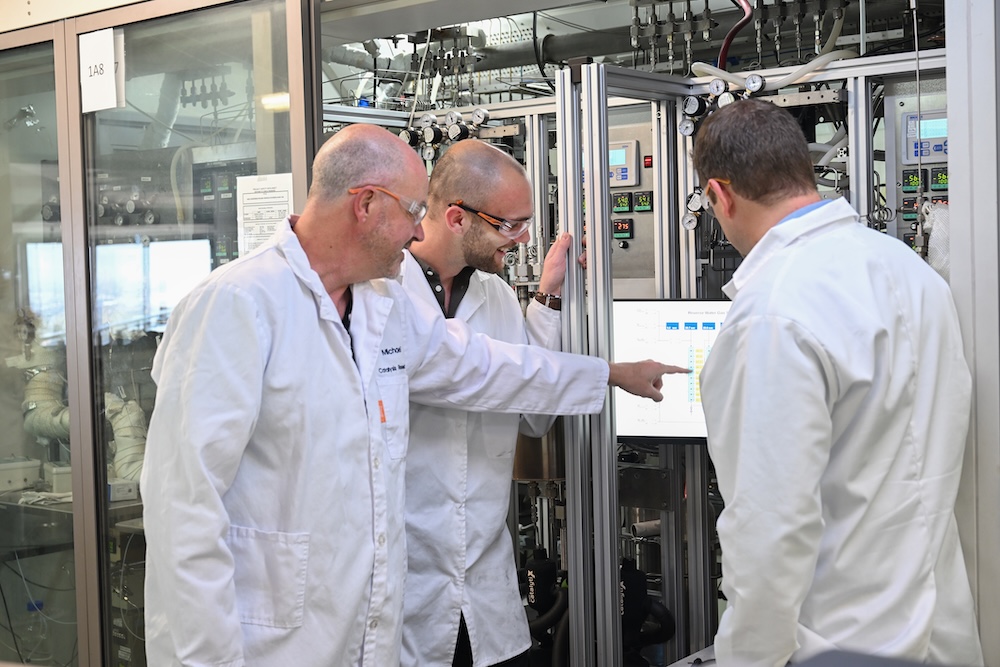Report on Territorial Disparities in Energy Poverty and Well-being Across the European Union
Introduction: A Spatial Analysis in the Context of Sustainable Development Goals
A recent spatial analysis of the European Union, titled “Territorial Variation of Energy Poverty and Good Health and Well-Being in European Union Countries: A Spatial Analysis,” reveals significant territorial disparities that impede the uniform achievement of key Sustainable Development Goals (SDGs). The research highlights a widening gap between Eastern and Western Europe concerning energy poverty and public health, directly impacting progress on SDG 3 (Good Health and Well-being), SDG 7 (Affordable and Clean Energy), and SDG 10 (Reduced Inequalities). By comparing QGIS-based mapping and self-organizing maps (SOM), the study visualizes how socioeconomic and technological inequalities shape energy access and health outcomes across the EU.
Key Findings on SDG Progress and Setbacks
Energy Poverty: A Persistent Barrier to SDG 7 and SDG 10
The study confirms that energy poverty remains a critical challenge, particularly in Southern and Eastern Europe, undermining the objective of SDG 7 to ensure access to affordable, reliable, and modern energy for all. This disparity also exacerbates regional inequalities, hindering the goals of SDG 10.
- Geographic Disparities: Nations such as Bulgaria, Romania, and Greece face severe energy poverty, while Northern and Western countries like Denmark, Sweden, and the Netherlands demonstrate greater resilience.
- Contributing Factors: The entrenched energy poverty in vulnerable regions is driven by a combination of older housing stock, low income levels, and high dependency on carbon-intensive energy sources.
- Post-Pandemic Trends: While overall EU energy poverty rates saw a slight decrease between 2019 and 2023, spatial inequality widened as wealthier regions with diversified energy portfolios and strong social protection systems recovered more effectively from price shocks.
Health and Well-being: The Human Cost of Energy Inequality and its Impact on SDG 3
The research establishes a direct link between energy poverty and adverse health outcomes, demonstrating that energy insecurity is a significant obstacle to achieving SDG 3. The inability to afford adequate heating or cooling, coupled with financial stress, creates a public health crisis in the most affected regions.
- Health Outcome Correlation: Countries with high energy poverty report lower life satisfaction, a higher incidence of chronic illness, and reduced access to preventive healthcare.
- A “Vicious Circle”: Central and Eastern European nations are often trapped in a cycle of low income, poor housing quality, and limited energy access, which perpetuates poor health and well-being.
- Erosion of Health Gains: The analysis indicates that progress on health indicators can be quickly reversed when energy costs rise faster than wages, as observed in Estonia and Italy, underscoring the fragility of well-being without energy security.
Methodological Approach: Dual Mapping for Enhanced Policy Design
Complementary Insights from QGIS and Self-Organizing Maps (SOM)
The study’s dual-method approach provides a more nuanced framework for understanding the complex interplay between energy, health, and socioeconomic factors, offering a robust tool for designing targeted policies aligned with the SDGs.
- QGIS-Based Mapping: This method excels at providing clear visual representations of the spatial distribution of energy poverty and health disparities, identifying distinct geographic zones of deprivation.
- Self-Organizing Maps (SOM): This artificial neural network technique captures non-linear, multidimensional relationships among indicators. It reveals hidden vulnerabilities and resilience factors not apparent in traditional mapping, detecting sharp differences between countries with similar socioeconomic profiles, such as Hungary and Croatia.
Policy Recommendations for an Integrated Approach to the SDGs
Strengthening EU-Level Coordination for Equitable Development
The findings underscore the necessity for cohesive, EU-level policies that tackle energy poverty and health inequality in an integrated manner. The report suggests that regional clustering analysis can serve as a diagnostic tool for the strategic allocation of funds and the prioritization of investments to maximize social returns and advance the SDGs.
Integrating Social Resilience into the Energy Transition
To ensure the EU’s energy transition is just and equitable, policies must move beyond purely technical goals. The pursuit of SDG 13 (Climate Action) and SDG 7 must not deepen existing inequalities. The authors recommend the following actions:
- Integrate social resilience metrics—including access to clean heating, income support, and education—into all energy transition policies.
- Link energy and health data to identify interventions that deliver the greatest benefits for both well-being and sustainability.
- Prioritize investments in healthcare and housing upgrades alongside grid modernization and renewable energy deployment.
- Design policies that address energy affordability to maintain public trust and support for long-term sustainability initiatives.
Analysis of Sustainable Development Goals in the Article
1. Which SDGs are addressed or connected to the issues highlighted in the article?
- SDG 3: Good Health and Well-being – The article directly links energy poverty to public health risks, including chronic illness, lower life satisfaction, and mental stress.
- SDG 7: Affordable and Clean Energy – The core theme is energy poverty, which relates to the lack of access to affordable, reliable, and modern energy. The article also discusses renewable energy adoption and energy efficiency.
- SDG 10: Reduced Inequalities – The research highlights stark territorial disparities and a widening gap in energy access and health outcomes between Eastern/Southern and Western/Northern Europe, addressing inequality within and among countries.
- SDG 1: No Poverty – Energy poverty is presented as a dimension of poverty, linked to low income levels and households struggling with high energy costs, which impacts their overall financial stability.
- SDG 11: Sustainable Cities and Communities – The article mentions the role of poor housing quality and older housing stock in exacerbating energy poverty and health issues, connecting to the goal of adequate and safe housing.
2. What specific targets under those SDGs can be identified based on the article’s content?
- SDG 3: Good Health and Well-being
- Target 3.4: Reduce by one-third premature mortality from non-communicable diseases through prevention and treatment and promote mental health and well-being. The article connects energy poverty to a “higher incidence of chronic illness” and the “psychological and social dimensions, including the stress associated with fuel insecurity.”
- Target 3.8: Achieve universal health coverage, including financial risk protection, access to quality essential health-care services. The text notes that regions with high energy poverty also experience “reduced access to preventive healthcare.”
- Target 3.9: Substantially reduce the number of deaths and illnesses from… air… pollution. The study mentions “air pollution” as one of the health risks compounded by energy poverty.
- SDG 7: Affordable and Clean Energy
- Target 7.1: By 2030, ensure universal access to affordable, reliable and modern energy services. The entire article revolves around “energy poverty,” “energy affordability,” and “access to clean heating,” which are central to this target.
- Target 7.2: By 2030, increase substantially the share of renewable energy in the global energy mix. The article mentions “renewable integration” and “renewable adoption” as key strategies used by some countries to improve energy resilience.
- Target 7.3: By 2030, double the global rate of improvement in energy efficiency. The text points to “limited efficiency improvements” and “older housing stock” as problems, while highlighting “efficient infrastructure” as a strength in resilient countries.
- SDG 10: Reduced Inequalities
- Target 10.1: By 2030, progressively achieve and sustain income growth of the bottom 40 per cent of the population at a rate higher than the national average. The article links energy poverty to “low income levels” and warns that rising energy costs faster than wages can erode health gains.
- Target 10.2: By 2030, empower and promote the social, economic and political inclusion of all. The study’s focus on “stark territorial disparities” and the risk of certain regions being “left behind in the EU’s energy transition framework” directly addresses this target.
- Target 10.4: Adopt policies, especially fiscal, wage and social protection policies, and progressively achieve greater equality. The article highlights the role of “strong social protection systems” and “targeted public subsidies” in mitigating price shocks and reducing inequality.
- SDG 1: No Poverty
- Target 1.2: By 2030, reduce at least by half the proportion of men, women and children of all ages living in poverty in all its dimensions according to national definitions. Energy poverty is treated as a key dimension of poverty, with the article analyzing “energy poverty rates” across the EU.
- SDG 11: Sustainable Cities and Communities
- Target 11.1: By 2030, ensure access for all to adequate, safe and affordable housing and basic services. The article identifies “older housing stock” and “poor housing quality” as key contributors to energy poverty and poor health, and suggests “housing upgrades” as a necessary intervention.
3. Are there any indicators mentioned or implied in the article that can be used to measure progress towards the identified targets?
- SDG 3: Good Health and Well-being
- Life satisfaction levels: The article states that countries with high energy poverty also experience “lower life satisfaction.”
- Incidence of chronic illness: Mentioned as a direct health outcome linked to energy poverty.
- Access to preventive healthcare: The study notes that this is reduced in regions with high energy poverty.
- SDG 7: Affordable and Clean Energy
- Energy poverty rates: The article explicitly uses this metric from Eurostat and EU-SILC data to measure the problem.
- Energy affordability: Mentioned as a key indicator, with Spain and Italy seeing “notable declines in energy affordability.”
- Rate of renewable adoption: The article cites this as a factor in Sweden’s improvement.
- SDG 10: Reduced Inequalities
- Measures of spatial inequality: The study’s core purpose is to map “stark territorial disparities” and a “widening gap” between regions.
- Income levels: Used as a key variable to explain the vulnerability of certain regions to energy poverty.
- Effectiveness of social protection systems: The article implies this can be measured by how well countries “mitigate price shocks and maintain household stability.”
- SDG 1: No Poverty
- Energy poverty rates: This serves as a direct indicator for the energy dimension of poverty.
- Household energy costs: The struggle with “high energy costs” is a primary indicator of energy-related financial stress.
- SDG 11: Sustainable Cities and Communities
- Quality of housing stock: The article refers to “older housing stock” and “poor housing quality” as measurable problems contributing to energy inefficiency and poverty.
- Housing conditions: “Stable housing conditions” are cited as a characteristic of regions with high well-being.
4. Table of SDGs, Targets, and Indicators
| SDGs | Targets | Indicators |
|---|---|---|
| SDG 3: Good Health and Well-being |
|
|
| SDG 7: Affordable and Clean Energy |
|
|
| SDG 10: Reduced Inequalities |
|
|
| SDG 1: No Poverty |
|
|
| SDG 11: Sustainable Cities and Communities |
|
|
Source: devdiscourse.com






